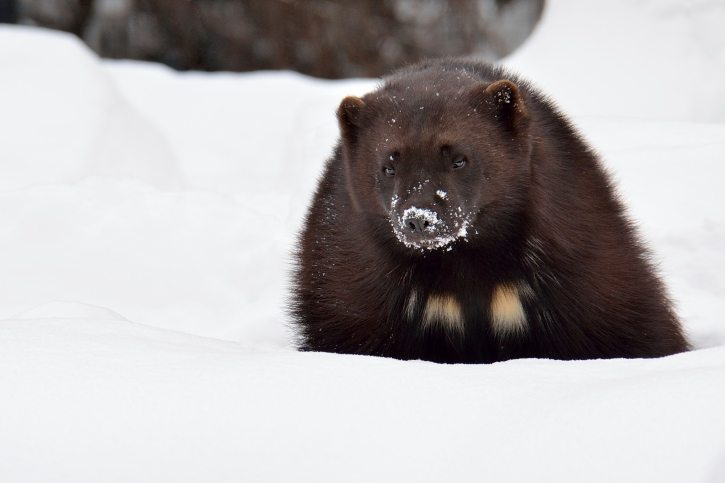The wolverine is the largest land-dwelling mustelid
It could grow up to 42 inches long, though 32 to 34 inches is the more common length. It can also weigh up to 70 pounds (32 kilograms), with males being almost twice as heavy as females. Of all the mustelids, only the sea otter and the giant otter are larger.
It is still fairly small, though, compared to other animals. What makes the wolverine notorious is that it doesn’t consider its own size when going up against animals much larger than itself, like bears, wolves, reindeer and moose.
Are wolverines endangered?
The current wolverine population remains unknown. Why? First, wolverines have a large home range, with that of males spanning more than 240 square miles (622 square kilometers) — that’s larger than the whole city of Chicago! Second, wolverines are secretive and difficult to observe. However, estimates put the population at 15,000 to as many as 30,000. The population is particularly large in Canada and Russia.
Because of this, the wolverine is listed as a species of Least Concern by the International Union for Conservation of Nature (IUCN). However, the worldwide population is decreasing, in general, and the IUCN’s European Mammal Assessment lists the European wolverine as Vulnerable.

In the US, the wolverine is classified by the USDA Forest Service and the Bureau of Land Management as a Sensitive Species. Also, the US Fish and Wildlife Service has recently proposed that the wolverine be considered an endangered species and protected as such.
Currently, the most serious threat to the wolverine population is loss of habitat since wolverines require large home ranges and also because females burrow in the snow. As the number of places covered in snow decreases with global warming, so less wolverines are born.
Wolverines are experts at living in the Arctic. Also, it is called Gulo gulo. Wolverines can climb trees.















